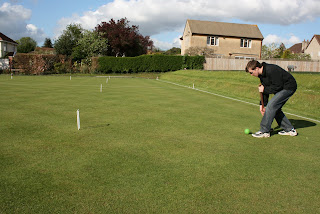
When we finally made it to Hay-on-Wye, we parked just below the ruins of a jacobean castle, the immediate lawn of which is occupied by metal bookshelves, full of books 50p for hardback, 30p for paperback at the honesty bookshop. You pay by depositing your money in a small box fitted into the stone wall of the castle. As we later learned, the honesty bookshop has several locations throughout hay-on-Wye with various depositories for the money. Inside the castle ruins itself is yet another bookshop. Throughout the village there are 29 bookshops including one strictly for crime and horror books (Murder and Mayhem) and one for just maps. My favorite bookshop was Richard Booths, which had large wall to ceiling bookshelves and unlike many of the other shops had a lot of space, large aisles and the books and section were clearly organized and labelled. I'm sure it will be hard for most of you who know me to accept, but I did not buy a single book in Hay-on-Wye, I think I was a bit overwhelmed. But I did enjoy visiting the shops and viewing the selection (including the odd appearance of the title "A history of Durham, New Hampshire, how that made its way to England I am not sure but quite interesting that it is now living in Hay-on-Wye). Besides the bookshops there are a number of gift shops, a very helpful information center, a number of galleries and a lovely clock tower. We enjoyed an ice-cream as we wandered around and after we had had our fill of shops we took a relaxing walk along the wye in the evening sun.








.JPG)



